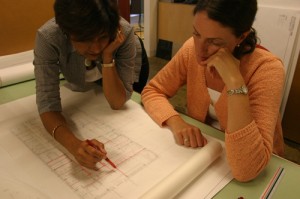Green became official in March. Until then, green was extolled in local and even state ordinances throughout the country. In Virginia, developers touted their projects’ green features to collect incentives offered by a few localities.
Green was relegated to the trailblazers. Those architects and developers and clients who believed in it included green materials and practices in their projects. Architects pushed their clients. But it wasn’t easy.
Even celebrated architect James Cutler, FAIA, was about to throw in the towel before finally persuading one of the world’s richest men to accept his design ideas on how to build without disturbing a nearby wetlands preserve and pond.
Green became official in March. This is to say that green is now written in building code language. This means code interpreters — including designers, builders, and code officials — can be more certain about the intent behind the writing. One of the complaints about the various green programs was the way they were written.
Green became official when the International Green Construction Code was published March 28, 2012. It becomes part of the family of codes developed by the International Code Council. The AIA played an integral role in developing the IGCC and those who wish to promote its use can find material support here: http://www.aia.org/advocacy/AIAB085336 . It should be used in tandem with the International Building Code, not instead of.
Prior to its final publication, the draft IGCC was adopted in several jurisdictions throughout the country. Virginia architects and building officials reviewed it as it was going through its public comment period and gave it mixed marks. As a general rule, the Virginia code officials are against it. VSAIA’s long-time code expert Kenney Payne, AIA, identified several shortcomings for its use in Virginia.
But the intent of the entire green movement embodied in the IGCC — conserving energy, water, and other resources; greatly reducing waste; and improving indoor air quality among them — has strong proponents among the profession and the general population. One of the questions remains: Is the IGCC a proper means to the desired end.
In Virginia, the answer is a qualified “no.” You see, along with its goals of improving the built environment, the IGCC also targets elements that are controlled by various state agencies other than the Department of Housing and Community Development. DHCD promulgates the building code.
The IGCC extends beyond DHCD’s purview to include elements outside the building, such as retaining stormwater, using gray water for irrigation, treating rain water for drinking, and properly collecting and disposing of debris from construction sites among them.
“By statute we can adopt only those parts that are not regulated by other state agencies,” according to Emory Rodgers, the director of the Virginia Division of Building Regulation. Other agencies whose turf would be trod by the IGCC as written include the Department of Environmental Quality, Department of Transportation, and the Department of Health.
This leaves Virginia with several options to be determined by the DHCD Board.
- One, it could decide to adopt none of the IGCC
- Two, it could decide to adopt the pieces and parts that apply only to buildings
- Three, it could pass along to other agencies the IGCC language as fodder for their future regulatory language.
In addition to the problems associated with several agencies’ controlling various aspects of the IGCC’s regulations, Payne has identified several areas that might not be appealing to architects within their sphere of expertise. These primarily hinge upon liability and where practitioners feel comfortable controlling their own destinies.
Some of these include:
- Whole-building life-cycle assessments
- Pre-design site inventory and assessment
- Soil test reports taken after occupancy
- Building service life plan
- Certifications assuring that
- all structural components last for 200 years
- site hardscapes endure for 50-75 years
- HVAC systems function for 25 years
- Green considerations in general – what happens if the completed building falls short of the predicted performance design models?
- Mandatory commissioning
And the list goes on.
Water use — gray water and rain water — has received a great deal of interest in the past several years. Because of this interest, according to a few building officials, many of these sections might wind up in the plumbing code in some form. If so, other codes probably would refer to these sections. In turn, the plumbing code could refer to health department regulations.
The health department would be the controlling agency to determine whether rain water could be viewed as drinkable. If so, it might require small-scale filtration or treatment requirements, which could be instituted through the plumbing code.
Other parts of the IGCC that do not make it into the various codes could be incorporated by Virginia localities as proffers. As they are written in code language, these IGCC elements could be understood more easily by developers and administrators within the localities.
DHCD officials have established a tentative schedule to review the 2012 ICC family of codes beginning in April and continuing through the end of 2013. Those architects wishing to work with Payne on the IBC review and Jim Snowa, AIA, and Megan Shope, AIA, on the IRC review should write Duncan Abernathy, AIA, as soon as possible at daber@aiava.org.


